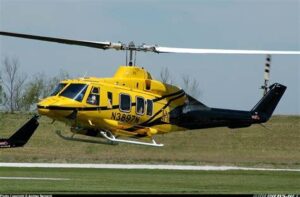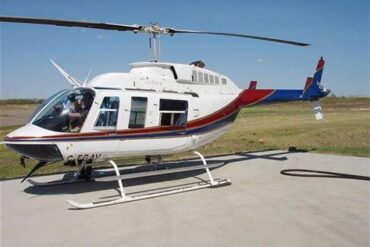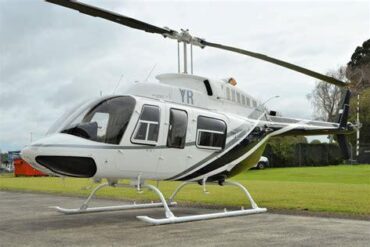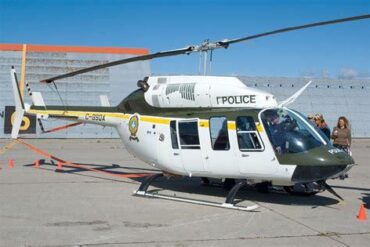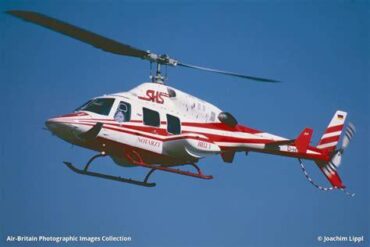The Bell 214ST, a versatile and robust twin-engine helicopter, has established itself as a preferred choice among operators worldwide for its impressive performance and reliability. This article aims to provide an in-depth analysis of the price and operating costs associated with the Bell 214ST, equipping potential buyers and operators with essential insights into its economic viability.
Overview of the Bell 214ST
The Bell 214ST is an upgraded version of the original Bell 214, featuring advanced technology and design enhancements. It is primarily used for cargo transport, medical evacuation, search and rescue, and firefighting operations. With a maximum takeoff weight of approximately 5,000 pounds and the capacity to carry up to 12 passengers, the 214ST is engineered for efficiency and performance in various demanding environments.
Market Price of the Bell 214ST
Determining the price of a Bell 214ST can be complex, as it is influenced by several factors, including age, condition, total flight hours, and additional features. As of the latest market analysis, the price of a used Bell 214ST typically ranges from $1.5 million to $3 million. Factors that contribute to this price range include:
-
Age of the Helicopter: Newer models command a higher price due to the latest technology and fewer maintenance issues.
-
Flight Hours: A helicopter with lower total flight hours generally has a higher market value, reflecting its potential longevity.
-
Modifications and Upgrades: Enhanced avionics, improved engine performance, and special configurations for specific missions can significantly affect the price.
-
Condition and Maintenance History: Well-maintained helicopters with documented maintenance history can fetch premium prices.
New vs. Used Pricing
-
New Bell 214ST: When purchased new, the Bell 214ST can range from $3 million to $4 million, depending on customization and additional options.
-
Used Bell 214ST: The market for used helicopters is robust, with prices influenced by the factors mentioned above. On average, used models fall between $1.5 million and $3 million, making them an attractive option for budget-conscious operators.
Operating Costs of the Bell 214ST
Operating a Bell 214ST involves various costs that can add up significantly over time. Understanding these costs is crucial for effective budgeting and financial planning. The primary components of operating costs include:
1. Fuel Costs
Fuel consumption is one of the most significant expenses for helicopter operators. The Bell 214ST has a fuel burn rate of approximately 40 gallons per hour. With fuel prices fluctuating around $5 to $7 per gallon, the estimated fuel cost per hour ranges from $200 to $280. Annual fuel costs can vary widely based on flight hours, but for operators flying around 300 hours annually, the total fuel cost can exceed $84,000.
2. Maintenance and Repairs
Regular maintenance is vital for ensuring the safety and performance of the Bell 214ST. Maintenance costs can vary significantly based on the helicopter’s usage, age, and condition. On average, operators should budget around $100,000 to $150,000 annually for routine maintenance, including inspections, parts replacement, and necessary repairs. This estimate can increase for older models requiring more extensive work.
3. Insurance Costs
Insurance is a critical aspect of operating any aircraft. The cost of insurance for the Bell 214ST can range from $20,000 to $50,000 per year, depending on factors such as the operator’s experience, flight hours, and coverage level. It is advisable to consult with insurance brokers specializing in aviation to obtain tailored quotes.
4. Pilot and Crew Salaries
Hiring qualified pilots and crew members is essential for safe operations. Salaries for pilots of the Bell 214ST typically range from $80,000 to $150,000 per year, depending on experience and certifications. Additionally, operators should consider training costs, which can add several thousand dollars annually, especially for recurrent training and certifications.
5. Hangar and Storage Fees
Storing a helicopter requires secure facilities, which often come at a cost. Hangar rental fees vary by location but can average around $1,000 to $2,500 per month, amounting to an annual expense of $12,000 to $30,000. Operators should factor in these costs when planning for the overall budget.
6. Depreciation
Like all aircraft, the Bell 214ST will depreciate over time. The depreciation rate for helicopters is typically around 5% to 10% per year. Operators should consider this factor when calculating long-term costs, as it can significantly impact the resale value of the aircraft.
Total Estimated Operating Costs
Combining the above factors, the total estimated annual operating costs for the Bell 214ST can be summarized in the following table:
| Cost Component | Estimated Annual Cost |
|---|---|
| Fuel Costs | $84,000 |
| Maintenance and Repairs | $100,000 – $150,000 |
| Insurance Costs | $20,000 – $50,000 |
| Pilot and Crew Salaries | $80,000 – $150,000 |
| Hangar and Storage Fees | $12,000 – $30,000 |
| Total Estimated Costs | $296,000 – $464,000 |
Cost-Efficiency Strategies
To maximize the economic viability of operating a Bell 214ST, operators can implement several cost-efficiency strategies:
1. Regular Maintenance
Adhering to a strict maintenance schedule not only ensures safety but also prolongs the lifespan of the helicopter, reducing long-term costs.
2. Efficient Flight Planning
Carefully planning flight routes can minimize fuel consumption and operational costs, allowing operators to make the most of their resources.
3. Training Programs
Investing in training programs for pilots and crew can enhance operational efficiency and safety, potentially lowering insurance premiums.
4. Fuel Management
Implementing fuel management strategies, such as using fuel-efficient flying techniques, can reduce fuel consumption and associated costs.
Conclusion
The Bell 214ST stands out as a reliable and versatile helicopter choice for various operational needs. Understanding the purchase price and operating costs is essential for potential buyers and operators looking to maximize their investment. By considering factors such as fuel costs, maintenance, insurance, and crew salaries, operators can better prepare for the financial responsibilities that come with owning and operating this aircraft. Through effective management strategies, it is possible to maintain a cost-efficient operation while benefiting from the capabilities of the Bell 214ST.
